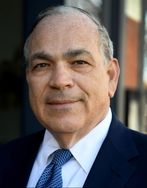|
The field of “Sports” has had a significant influence on Indianapolis, Indiana, during the eighty-plus years that I have lived in the Capital City. From the outset, over one hundred years ago, with the Indianapolis Motor Speedway and the famous “500 Mile Race” to the present day NFL Indianapolis Colts, NBA Indiana Pacers, Indianapolis Indians Baseball Team and The Fuel Hockey Team, all have contributed to the luster and glory that sports have brought to the “Circle City.” Once again, “sports” are making a major contribution to the future success of a major entity in Indiana’s Capital. It was a personal pleasure this past Spring to have a preview visit to “The Riley Children’s Health Sports Legends Experience at The Children’s Museum.” If the title doesn’t take your breath away, the “experience” will. The 7.5 acre, $38.5 million project is by far the most exciting and worthwhile addition to the local sports scene in decades. It encompasses both opportunities for sports participation and fitness while encouraging learning, fun and entertainment through sports memorabilia and challenges for all ages. The emphasis is on family participation. The challenge is where to begin enjoying the various “Sports Legends Experiences.” There is so much to see and do that it is difficult to determine a starting point. I was initially shown some of the displays in the “Old National Bank Sports Legends Avenue of Champions.” Various sports “Legends” who have inspiring stories with strong Indiana connections are featured. The names are familiar to all who have ever resided within the boundaries of the Hoosier State: Oscar Robertson; Larry Bird; Tamika Catchings; DaMarcus Beasely and A.J. Foyt, to name just a few. Add to those illustrious individuals Wayne Gretzky; Bobby “Slick: Leonard; Reggie Miller; Wilma Rudolph; Reggie Wayne and Barbara Wynne. Hopefully, you are beginning to understand my challenge in trying to cover all there is to know about the many “legends” presented. Moving along as quickly as my legs and mind would allow, displays covering the accomplishments of the before mentioned legends as well as the various collegiate and pro athletes and teams that have performed so admirably within our State were presented. Best of all, there was the opportunity to practice my sports technique, such as it is, against the legends while shooting hoops against a time clock; agility and balance through rowing; blocking and kicking football and soccer goals and even becoming a broadcaster announcing my personal great moments in sports. All that was covered before I had the opportunity to see the greatest challenges of them all – outside The World’s Largest Children’s Museum. That’s right…as the saying goes, “You Ain’t Seen Nothing Yet!” Within easy walking or running distance, depending upon your agility, are a dozen experiences on paths made of soft, spongy material to prevent injury should you stumble or fall. You can test your various mental and physical skills against time clocks, hoops and goals. Your personal “bests” will come together to create your own legendary family moments. Try a hand at shooting baskets geared toward various age and size requirements; kick field goals and participate in soccer games; play golf on special links designed by Pete and Alice Dye; race along on the Indianapolis Motor Speedway Pedal Car Racetrack; Church Brothers Collision Repair Drag Strip or the Barbara Wynne Tennis Challenge. Are you getting the picture? There is far too much to see and do in one trip to the Museum. The “Legends” will take more time and trips to accomplish all there is to do. Before we go, however, you will want to experience the “Fantasy Tree House of Sports” which dominates one end of the sports field. This sixty-foot tree was inspired by Disney’s “Tree of Life” letting visitors climb among giant pieces of sports equipment and provides a platform overlooking all the outside sports venues. The view is breath-taking and can only begin to make you appreciate the many sports experiences in which you have participated. The Museum located at 3000 North Illinois Street is open Sunday thru Wednesday from 10 a.m. to 5 p.m. Thursday thru Saturday from 10:00 a.m. to 8:00 p.m. The doors are closed on Easter, Thanksgiving, Christmas and Mondays. after Labor Day through February. For pricing of the “Legends” consult the Museum’s e-mail address: www.childrenmuseum.org/sport-experience.
Several months ago I was asked by the president of my organization to assume a new role on an interim basis. While I had worked with each of the groups I was being asked to supervise, the new responsibility would be totally outside of my day-to-day experience. Oh, and I had to make this decision in the next 2 1/2 hours. When situations like this present themselves, what do you do? The safe route is just that—safe. It’s easiest to decline and stay right where you are. You can think of reasons to justify that decision. You don’t know that part of the organization. Who will take your role if you’re not there? You’re not ready for it. Each of those thoughts ran through my mind. But I also had other thoughts, competing for space in my head. These included: This is a way to grow, I will learn new things and meet new people, the president must think I can do this, my associate dean is ready to be the dean. So when he asked me what I thought, I candidly replied, “This scares me to death. But I will paraphrase Richard Branson [CEO of Virgin] who said, ‘When someone asks you to do something amazing, say yes and then figure out how to do it.’ ” So I said yes. Saying yes is not necessarily the right decision for every person. But think about what you would do if a similar situation was presented to you. I had been a business dean in three institutions for about 16 years. While each institution was quite different, the job was essentially the same. I chose to be a dean again and again for a variety of reasons, not the least of which was that it was easy for me, especially as a mom who wanted to be present for most of her kids’ activities. I knew how to do this job inside and out, and I was comfortable. But about a year before I was asked to assume my new role, I told the president that I was getting into “maintenance mode,” which is a not a good thing for me. I am a builder, a change agent, a “make things better” person, and I was running out of ideas. The president remembered that conversation when he needed someone for the interim role. He understood that I had not spent time in the part of the university he was asking me to lead. But his confidence in my abilities to lead, manage and communicate gave me the willingness to leap into the unknown. I see folks stuck in lots of jobs. Maybe they never should have taken the job to begin with, as their skills and experiences are not a good fit with what they are doing. Or perhaps they once were quite happy but now are miserable. They might even think no one realizes how miserable they are. On the contrary, everyone does. Maybe, like me, they need to grow in a new direction and, for whatever reason, haven’t had the gumption to pursue anything new. Please don’t stay stuck! If anything I’ve said resonates with you, look for new opportunities, either within your organization or outside it, so you can stretch yourself. Learning new things is quite exciting, but also intimidating. I haven’t been this stimulated in probably five years. Is it scary? Of course! But sometimes a little fear of failure can provide the impetus to work that much harder to ensure your success. The goal is growing and helping the organization. So I’m glad I took the leap of faith and said yes when asked to do something different. While you may not be asked, you are in charge of your career and can certainly pursue new growth opportunities. Update that resume and get started today!
The study of aging is incredibly important. Although it’s a process we all go through, the amount of research on aging is sorely lacking. Considering that the number of people in the United States over the age of 65 outnumbers the entire population of Canada, it’s obvious that need for research into the aging process is dire. Understanding the biology of aging doesn’t require a lab coat, but it does require knowledge of the jargon around the science. For the convenience of America’s senior population, here’s a helpful breakdown of all the facts and figures on aging seniors need to know. About Caloric Restriction Caloric restriction is an eating practice seniors might want to consider. However, always remember it’s crucial to discuss any potential diet changes with your doctor before engaging in them. However, knowing the language around caloric restriction can help you ask the right questions. Scientifically speaking, caloric restriction is described as “undernutrition without malnutrition” and is essentially eating 30-40% fewer calories while still maintaining nutrients and vitamins to support a healthy lifestyle. Preliminary results from studies conducted on monkeys demonstrates success in extending lifespans through caloric restriction. This has not been tested in humans yet, but the results in other organisms are promising. Still, it’s important to keep in mind that a calorie restricted diet makes mammals more susceptible to hypothermia and increases healing time for wounds. Protein p53 and Tumors Protein p53 is a tumor suppressor—meaning that it acts to combat the cell mutation that causes cancer. It occurs naturally in the body but is disrupted by damage to your DNA. The question of whether aging causes DNA damage or DNA damage causes aging is one that scientists have been arguing for several years. However, regardless of their answer, what seniors need to know is that proper nutrition can help increase DNA repair, making it easier to support protein p53 and the important work it does in protecting our bodies from cancerous cells. Eating lemons, persimmons, strawberries, apples, broccoli, and celery has been shown to aid in DNA repair so keep these around the house and you’ll be taking active steps towards wellness. Oxidative Damage ROS, or reactive oxygen species, are oxygen-containing molecules produced naturally when the body turns food into energy. This is a process that we see in many instances of nature; for example, the way an apple browns in the sun or rust occurring on iron. The more we age, the more likely oxidative damage is because our cell’s defenses against it is reduced. Oxidative damage can lead to Alzheimer’s, cancer, diabetes, heart disease, and age-related deafness. However, consuming antioxidants helps boost the body’s ability to protect itself. Examples of foods high in antioxidants are: grapes, blueberries, red berries, nuts, leafy greens, sweet potatoes and other orange vegetables like carrots, green tea, and whole grains. No matter where you are in the aging process, eating right is one strategy you can employ to slow the cell damage and oxidation and help keep our brains and bodies strong even in old age. However, buying fresh vegetables, supplements, and vitamins can become costly especially considering a large portion of seniors rely on social security to make ends meet. Fortunately, there is a way you can increase financial liquidity after retirement. Did you know if you still maintain a life insurance policy, you can sell all or a portion of your policy for an amount greater than the cash surrender value? This is known as a life settlement and can provide the stability you crave. Contact Life Settlement Advisors to learn more. Case Study: Patricia’s two children are grown, married with their own children and live more than a seven-hour drive away. Patricia wanted to be closer to her grandchildren. Her oldest son convinced her to move closer to him. Patricia sold her life insurance policy and used the funds to ease the cost of moving and find a comfortable new living arrangement.
I know that it is sometimes easier to say than actually do. So many things are racing through our minds. This is especially true if you are near or at retirement. There are so many things to consider. We have family that we worry about. They can be kids or grandkids. Where will they go to school, how are they financially? Will they need our help? Or, how can we help? Let’s not forget ourselves. Will I have enough retirement income to keep me in the lifestyle that I have become accustomed to? Will my money last? What about a downturn in the stock market? Do I have too much equity exposure? And, let’s not forget our health, long term care needs, and the money to take care of all these things. And, with all this in mind, how can you “go to bed happy and wake up happy?” The answer is to start emptying your “worry buckets.” And, the way to do that is with some planning. Let’s take a look: There is an old saying that goes something like this. When young, the question is if I will die. When we get older, the question is... when will I die. If we all knew the answer to that, life would be simpler but I don’t think enjoyable as we approach that end date. So, how about some good soul searching questions. If you happen to be married, do it with your spouse. Let’s look: If you happened to pass away now, would those that are dependent upon you be in decent shape? If the answer is no, take a look at your life insurance portfolio. Maybe you need some more. Maybe you want to sell all or a portion of your life insurance portfolio. Want to look at long term care types of expenses? What happens of you can’t perform 2 of the 6 activities of daily living? Do you have a financial vehicle that would spring alive and provide you with cash now? They do exist, and it doesn’t have to be a long term care policy. Have you pre-paid for your funeral and expenses around that event? It makes it much easier on your family if you have. Are your beneficiary designations up to date on your policies and investments? What about your will? Up to date or need a revision? Have you made a distinction between your wants and needs? You know, separating your essential and discretionary income needs. What about your doctor? Are you going in regularly for a checkup? In closing, I did have an event happen that shook me around. My wife passed away with complications in surgery. Being in this business, I had a pretty good plan and felt comfortable. Now that my life has changed, I went back and revisited everything I mentioned above. I took the steps to make sure that everyone was protected... including myself. So, I am not going to say that I have emptied all “worry buckets” but I have most of them. And it allows me to “go to bed happy and wake up happy.” Is there anything better than that? Maybe you need to sit down with a financial professional and take a look at your situation.
Are you having enough money withheld from your regular paychecks? The Tax Cuts and Jobs Act (TCJA) has made several significant changes to the tax rules for individuals for 2018 through 2025. As a result, many taxpayers who previously itemized deductions are expected to claim the standard deduction, starting in 2018. 3How is withholding affected by the TCJA? The amount you elected to have withheld on your Form W-4 under the previous tax law might need to be revised under the new law. If you withhold too much, you’re effectively giving the IRS an interest-free loan to use your money until it’s refunded after you file your 2018 return sometime next year. Conversely, if you withhold too little, you’ll face a stiffer tax bill when you file the return. Unfortunately, it’s not easy to figure out the right withholding amount under the TCJA. A “paycheck checkup” can help you assess your situation. Withholding Basics Your 2018 tax return isn’t due until next April. But you generally can’t wait until you file your tax return to pay the full amount of tax you owe. Instead, employers are required to withhold taxes from the paychecks of employees. Likewise, self-employed individuals and retirees and others with investment income or retirement account withdrawals must make quarterly estimated payments. You might need to do both — have tax withheld and pay quarterly installments — if you earn substantial income outside of your regular salary. If you fail to comply with the requirements, you could be liable for an estimated tax underpayment penalty, in addition to the tax liability. The due dates for the quarterly estimated payments for a tax year are:
These dates are adjusted for weekends and holidays. So, the next quarterly installment for income earned in 2018 is due Monday, September 17, 2018. Safe Harbors You can avoid an estimated tax underpayment penalty using any one of these three safe harbor rules:
TCJA Changes If you’ve been having “just the right amount” withheld for your circumstances in the past, the TCJA has altered the landscape. Examples of major changes that will affect individuals for 2018 through 2025 include the following: The standard deduction is almost doubled to $12,000 for single filers, $24,000 for joint filers, and $18,000 for heads of households. The itemized deduction for state and local taxes combined is limited to $10,000 per year. This applies to any combination of 1) state and local property tax and 2) state and local income tax (or state and local general sales taxes if you choose to deduct them instead of state and local income taxes). Previously, these amounts were fully deductible by most taxpayers who itemized deductions. The itemized deduction for mortgage interest is potentially reduced under the new law. Specifically, the interest deduction for new acquisition debt is limited to interest paid on the first $750,000 of debt, down from $1 million. (Pre-TCJA home acquisition debts of up to $1 million are grandfathered under prior law.) In addition, the deduction for interest paid on up to $100,000 of home equity debt is generally repealed (unless the home equity debt is used to buy, build or substantially improve the home secured by the debt, in which case it can be treated as acquisition debt subject to the $750,000 limit). Itemized deductions for most miscellaneous expenses — such as investment advisory fees and unreimbursed employee business expenses — are eliminated. Personal and dependent exemptions are eliminated. The child tax credit — which generally applies to dependent children under age 17 — has been increased from $1,000 to $2,000, and the income phaseout thresholds have been significantly increased (to $200,000 for singles and heads of households and $400,000 for married couples who file jointly). So, many more households will be eligible for the increased credit. In addition, a new $500 credit is available for other qualified dependents, including a qualifying 17- or 18-year-old, a full-time student under age 24, a disabled child of any age, and other qualifying (nonchild) relatives if all the requirements are met. In light of these changes, many taxpayers who have itemized in the past may instead opt for the standard deduction starting in 2018. This could have a major impact on their withholding obligations. Even if you expect to continue to itemize under the TCJA, you can benefit from a “paycheck check-up,” especially if you have older children who won’t qualify for the $2,000 child tax credit or you report income from more than one job. (See “3 Families Who Might Need to Adjust Their Withholding” at right.) Of course, your withholding choices should also reflect your personal preferences. For instance, some taxpayers prefer to overpay taxes during the year so they can receive a big tax refund from Uncle Sam. Others like to just break even. To adjust your withholding, request a new W-4 form from your employer, fill it out and then submit it. Any withholding change will show up in the next payroll calculation. Need Help? The IRS offers worksheets for estimating the “right” amount of withholding, as well as a new online withholding calculator to help you crunch the numbers. Unfortunately, the online calculator requires you to input a lot of financial information, which can be time consuming. And many people aren’t comfortable putting sensitive personal data into cyberspace. To minimize the hassle and potential security risks, discuss your withholding with your tax advisor. He or she can help you sort through the provisions of the TCJA that will affect your tax situation and address other withholding objectives in the coming years.
If you are an active reader of this website, chances you are a savvy, informed investor. As we approach retirement age, smart investors have learned to reallocate their portfolio, moving away from more aggressive investments and into safer bets. Some of us have our homes paid off; some took advantage of recent years’ low mortgage rates and have refinanced to fund once-in-a-life-time vacations, pay off credit card debts, or to finally pursue that dream hobby – maybe a boat, an antique car – that could be a bit impractical, but what the heck, you’ve earned it. Some of us are also refinancing to help our children. We tell them we all had it tougher when we were their age; but truth be told, in today’s economy, young people do have a lot of financial burdens. Average student loan debt has doubled in just twelve years. Starting salaries are in much better shape than a decade ago, but current level of wage growth cannot keep up with home price growth, which is now at 6.2% annual increase nationally and as high as 13% in markets such as Seattle. If you have adult children living in one of these expensive cities, a conversation about helping them buy a home may already be familiar to you. To many, parents helping a child buy a home is a duty and a rite of passage. Nearly 1 in 4 (23%) of all home loans in the U.S. now has a non-spouse co-borrower listed for the mortgage. In most cases, it is a parent who is co-signing. In San Jose, that figure is 51%; in Miami, 45%; in Seattle, 39% of home loans now have a non-spouse co-borrower. So it is certainly common particularly in expensive housing markets for a parent to be a co-borrower of an adult child’s home loan. Beyond that, parents are also helping to fund children’s down payment. According to ValueInsured’s latest quarterly Modern Homebuyer Survey, 34% of Millennial first-time homebuyers plan to rely on a parent’s help to fund their home down payment. In Denver where home prices are giving Seattle a run for its money, 41% of young people said they need to rely on their parents with their down payment. 46% of Baby Boomers nationally report they have helped or plan to help their children with a down payment, and again, that percentage is higher in hot housing markets. No doubt many among us are refinancing our own home to help our children. Some might be able to draw funds from savings or other investments to help without a cash-out refinance. In either scenario, The assumption is that home prices will continue to go up, and eventually, hopefully, the adult child will be in a position to pay back the parent. Or if it is a gift, the down payment would give the child a leg up for a better financial future as home values rise. Sounds great, but all relies on a big “if”… Any housing historian or economist would tell you home prices do tend to go up long term, but never in a straight ascending line. The housing market on average goes through 7-10 year value fluctuation cycles. As luck would have it, we are now right at the 10-year mark from the height – and the eventual spectacular collapse – of the last cycle that ended in 2008. As parents, we want to help our children and set them up for success, but we need to be careful that by helping, we are not moving them closer to the eye of the next financial storm. After nearly a decade of downward trends, interest rates are now on an upward trajectory, with 30-year fixed now at a 4-year high. Home sales volume are on a decline, indicating that while some people are willing to pay the possibly overvalued prices, many more are staying on the sidelines to avoid buying high, and therefore bringing down total home sales volume. The Federal Reserve is planning another three to four interest rate hikes this year. Median home prices are now 20 to 30 percent above pre-bubble peak of the last housing correction in many overheated markets. Housing bubble talks are getting more rampant, including by renowned money manager James Stack, who predicted the last one. Some say like the stock market, home prices could continue to go up. But we are witnessing more volatility after several years of uninterrupted gains on Wall Street. Now, even typically bullish Goldman Sachs is warning there is a "high probability" for a stock market correction in the coming months. If you have or plan to refinance your own home to help your child buy a home, it is prudent to bear in mind that young people who buy now could be buying at top of the market. If the housing market corrects and your child needs to move for a job or other reasons during the downturn – as mobile young families often do – one home purchase by your child now could have regrettable effects later on two households. Nearly half of the country’s housing markets – including Chicago, Miami and Las Vegas – still have not recovered close to their pre-2008 crash peaks. In other words, a parent who refinanced their own home to help a child buy a home in Chicago in 2006 could still be under-water, in both households. Unlike during the last housing peak, the current market run-up does come with new solutions: Down Payment Protection and Equity Protection. These innovative and consumer empowering products are insurance policies that can be purchased by homebuyers and refinance mortgage borrowers from their insurance agents to protect their down payment and appraised home equity value. Even if homebuyers are buying at peak of the market, if they sell later at a loss after a correction, their loss in the down payment they put into the home purchase is reimbursed back to them, in a simple, no-catch process that issues them a check of the loss value within 30 days. Refinance borrowers have a similar option, in equity protection. They can lock in the appraised value of their home at market high when they refinance; when they sell later at a loss after a downturn, their loss in equity can be reimbursed back to them, also simply and quickly within 30 days. Caring parents want to help their adult children pursue the American Dream of homeownership and build their own nest. It’s an admirable thing to do. But there’s a smart way to do it without exposure to unpredictable market risks, while setting your children up for more secure leaps into their financial future. In the same way you may be reallocating your own investment to safer money places, there is now a safer way to buy a home, and certainly a safer, smarter way to be a generous parent.
|












